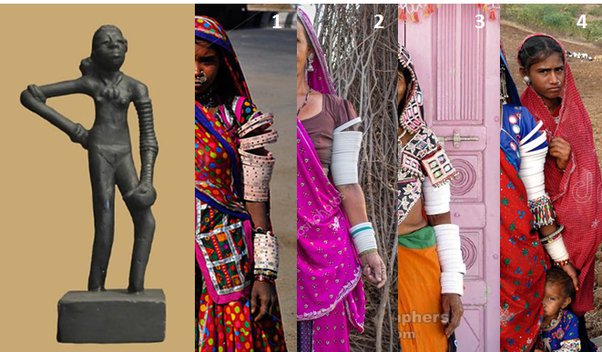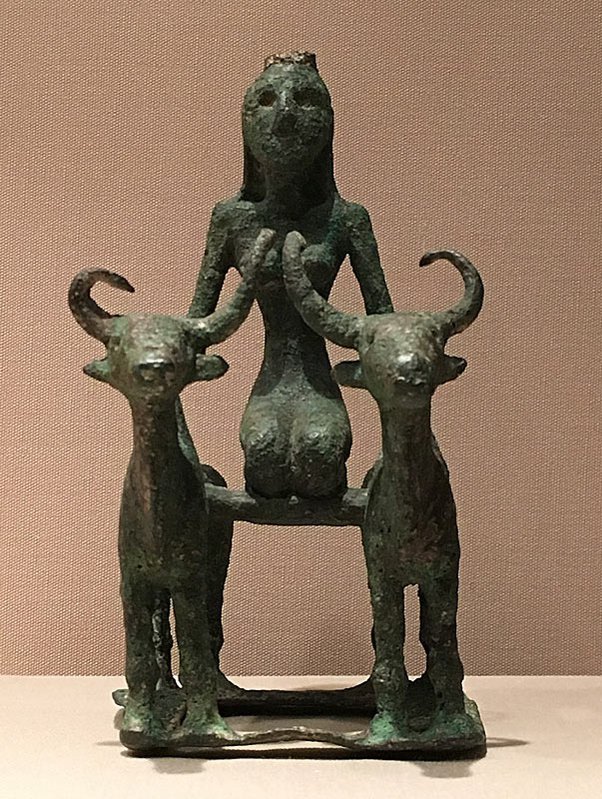
The Indus valley civilization is symbolized as the plethora of goddesses during the Vedic period, where men and women in Harappan civilization occupied dignified positions.
UN Academy
Indus valley civilization is primarily symbolized as the ancient civilization of India, where it is depicted that the woman had a respectable position in the society. In the time of the Vedic period, men and women in Harappan civilization respected the Pandora of the goddess for their civilization assumption. As per the basis of Vedic society, women initially participated in tribal assemblies and various types of religious assemblies. In the Vedic period, women initially created an important role in the history of civilized India. As per the basis of historical study, it is scripturally indicated that the Indian women were comparatively gaining high status and more respect during the time of early Vedic period of Indus valley civilization.
Welfare of Women in the Harappan Civilization
Since time immemorial, women have primarily created an important role in shaping Indian history. As per the basis of Indian history, different types of scripture indicate that the Indian woman initially enjoyed high status and comparatively gained more privilege during the time of the early Vedic period. Women from the Indus valley civilization were gaining more surpassing, in comparison to other contemporary civilizations, such as Rome and Greece. In the Indus valley civilization, the actual evidence of the female clay figures initially highlights the cultural and social role of females in the Indus valley civilization. In Harappan civilization, women were primarily worshipped in prakrity, which is considered the mother of the goddess, and occupied the most prestigious position in society. In context to the social position and welfare of men and women in Harappan civilization, women were not mistreated; rather they were given the freedom to live the life of their free will.
Men and Women in Harappan Civilization
Women played a crucial role in shaping the history of India. In context to the social status of men and women in Harappan civilization, women enjoyed similar status as the men in every aspect. However, the important opportunities such as decision-making and economic participation were also equally conducted by the woman. The above-mentioned accessible way primarily entails the actual concept that both men and women were making their own preferences without any difficulties and limitations. However, in the time of the Vedic period, 50% of the total world’s population was women. However, after the time of the Vedic period, the ratio of women decreased due to the unequal social status of men and women.
 In the predominant society of the Indus valley civilization, women were initially expected to work in their own houses. Men of the Indus valley civilization were involved with farming to support their own families. However, men were considered to be the only bread earners of the family while the women of the Harappan civilization were getting an intense level of respect from different types of other societies. In Harappan society, women were gaining the highest amount of respect, which was considered not shown in any other society and culture. Women were most of the time treated as superior to the men because they were in charge of the household work. However, men were in charge of the functionality of a Harappan civilization’s government and society where women too played a vital role.
In the predominant society of the Indus valley civilization, women were initially expected to work in their own houses. Men of the Indus valley civilization were involved with farming to support their own families. However, men were considered to be the only bread earners of the family while the women of the Harappan civilization were getting an intense level of respect from different types of other societies. In Harappan society, women were gaining the highest amount of respect, which was considered not shown in any other society and culture. Women were most of the time treated as superior to the men because they were in charge of the household work. However, men were in charge of the functionality of a Harappan civilization’s government and society where women too played a vital role.
Women’s Status in the Harappan Civilization
In the Harappan civilization, women were initially getting more respect and high status compared to the other different societies
Women in the Harappan civilization initially were free to develop their abilities and personal choices without any restrictions and boundaries
Historical sculptures discovered from the Indus valley civilization highlighted the significant role played by women during the ancient period
However, women were not considered as property; they were even not on par with their male counterparts
Bull riding was one of the primary transportation means in Gangetic valley, performed by women
What was the religious preference of men and women in Harappan civilization?
Answer: Indus valley people were polytheistic comprising Jainism, Hinduism and Buddhism. Men and women from the Indus valley civilization prioritized nature-worshipping. Women offered their prayers to natural elements, Pashupati and mother goddesses. Men and women in the Harappan civilization worshipped stones, sun, and water.
Indian women initially enjoyed high status and comparatively gained more privilege during the time of the early Vedic period.
Conclusion
In the Indus valley civilization, men and women were getting equal amounts of respect and social position in the society. Hence, it is primarily concluded that, in the Indus valley civilization, women were getting more respect than in any other society in the nation. People from the Indus valley civilization, women were considered the plethora of goddesses, which is considered to be a huge respectable position. Women’s status in hardpan civilization was considered the most prestigious position. Men and women in the Harappan civilization were getting the same amounts of respect, on the basis of social, economic and cultural respect.
_________________
Courtesy: UN Academy